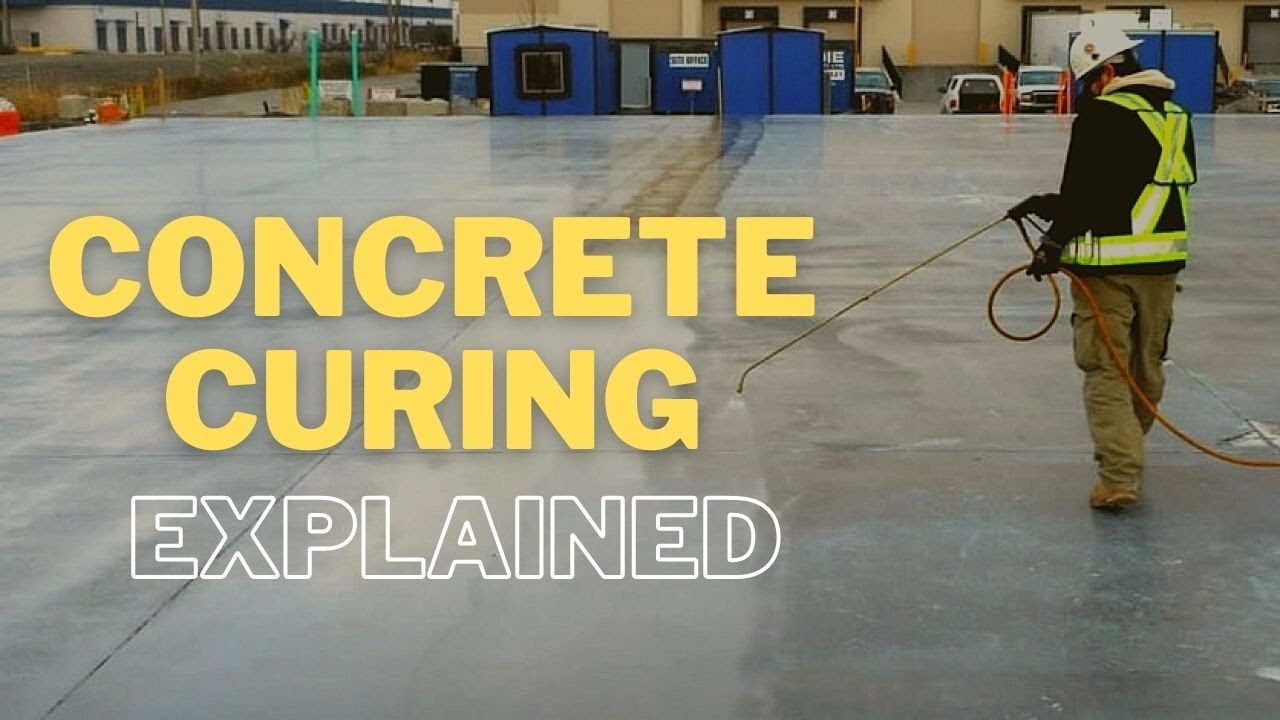Curing of Concrete | Curing time & Duration | Curing methods – Concrete is a construction substance consisting, in correct proportions, of cement, sand, and water. The aggregate connects the chemical reaction between cement and water.
Plastic would be fresh concrete so that it can be molded to the desired shape and compacted to form a dense mass.
Concrete should be put in a position until its plasticity begins to be lost. The final setting time of concrete is called the time when concrete has completely lost its plasticity and has become difficult.
Curing of Concrete
Curing plays a very important part in the development and longevity of concrete strength. The exothermic reaction (hydration) takes place after adding water to the concrete mix (Cement, Sand & Aggregate), which allows the concrete to harden.
Concrete hardening is not immediate and lasts for a longer period of time, which requires more water to process hydration. So, before the hydration reaction in concrete ends, the concrete held humid. The curing of concrete is called this method.
Curing is the method of holding the concrete moist to protect it from moisture loss due to ambient temperature and hydration reaction.

Purpose of Curing of Concrete
Hydration is called the reaction between cement and water. It’s an exothermic response (the reaction which releases heat).
Hydration begins after applying water to the concrete mix, which allows the concrete to dry out rapidly due to an exothermic reaction that releases heat. Concrete is kept moist to achieve the full strength of concrete as quickly as possible to complete the hydration process.
What is the curing period of concrete?
28 days is the required time for curing concrete to achieve maximum strength.
When it cured for 3-7 days, concrete achieved 50 percent of its ultimate strength. In 14 days, 75% of the compressive strength was reached. 90 percent of the strength of the concrete design was reached in 28 days. So it is obvious that the concrete strength increases as time increases.
Minimum curing time for Cement Concrete
The early strength of concrete is most essential, and the final strength of concrete is responsible for it. By considering the environmental conditions, form of structural members, atmospheric temperature, we can do proper curing.
As stated, holding the right temperature also plays a vital role in concrete, it should not be colder than 50C. For a minimum of 28 days, the concrete is kept damp.
Nowadays, due to lack of time, the procedure can be completed in 14-20 days by adopting modern techniques. Nevertheless, it is still recommended that concrete be kept moist for at least 14 days.
Concrete for ordinary Portland cement should not be cured for less than 7 days in compliance with IS 456-2000, and for concrete with mineral admixtures or mixed cement it must be at least 10 days.
Curing should not be less than 10 days for OPC and 14 days for cement with mixed cement & mineral admixtures in case of hot weather and arid temperature conditions.
Cement Hydration
Hydraulic cement, including portland cement, set and harden when mixed with water at room temperature. The reactions that cause setting and hardening are collectively described as exothermic hydration reactions.
The reaction of portland cement compounds with water is exothermic; that is, heat is generated from the reaction. The average is 120 calories per gram during complete hydration of the cement.
In normal construction, structural members have relatively high surface-to-volume ratios such that the dissipation of the heat generated is not a problem. By insulating the forms, this heat can be used as an advantage during cold weather to maintain proper curing temperatures.
However, for dams, massive foundations, and other mass concrete structures, measures must be taken to reduce or remove heat by proper design and construction methods. This may involve circulating cold water in embedded pipe coils or other cooling means.
Another method of controlling heat evolution is to reduce the percentage of compounds with the high heat of hydration, such as C3A and C3S, and use a coarser fineness to produce a Type IV low heat of hydration cement.
Since Type IV is generally no longer available in most locations, Type II and pozzolans or slag are used as a substitute.
The use of large aggregate (nominal diameter greater than 150 millimeters) also helps to reduce the cement requirement and consequent heat by reducing the water demand, hence, less cement at the same water cement ratio.
what is the minimum curing time for concrete?
Summary:
This article discusses the curing of concrete, specifically how to cure concrete in cold weather.
Key takeaways:
- Concrete must be cured properly in order for it to reach its full strength potential.
- If curing concrete in cold weather, take precautions to prevent the concrete from freezing.
- There are several methods that can be used to cure concrete in cold weather.
Counter arguments:
- Some argue that concrete does not need to be cured in order to reach its full strength potential.
- Others argue that concrete can be cured in cold weather without taking any special precautions.